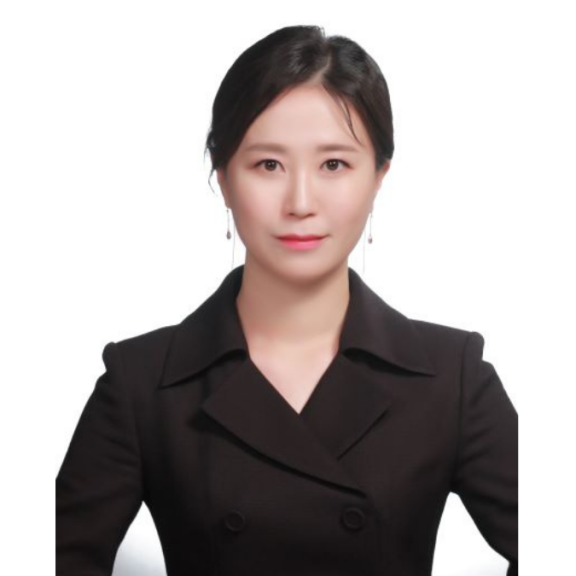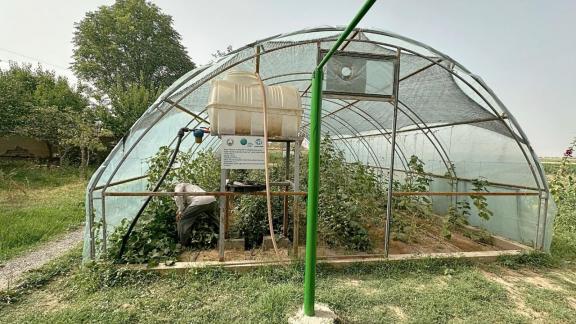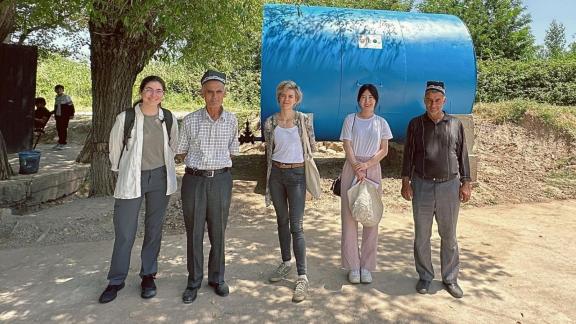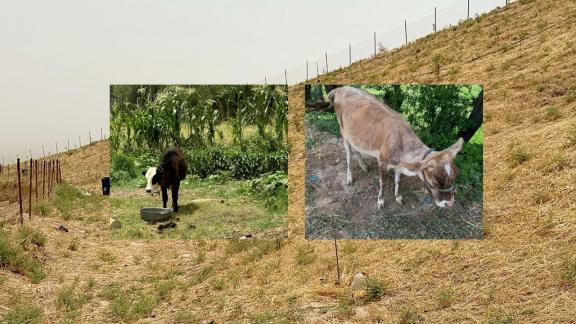Empowering women through climate adaptation: What are the next steps?
A reflection note from an evaluation visit to Tajikistan
Disclaimer: The names of people in the blog have been changed for privacy and to comply with international best practices. The views expressed in blogs are the author's own and do not necessarily reflect the views of the Independent Evaluation Unit of the Green Climate Fund.
“Our daughters and daughters-in-law, and farmers also need to go, observe, and learn,” says a Tajik woman who recently adopted climate-resilient farming practices under a GCF project.
Zarina, a Tajik woman from a farming village in a central district, was one of the female leaders who came to tell us about the community’s experience with climate-resilient farming and crop diversification. The village was identified as falling under the ‘most vulnerable’ category and implemented some adaptation activities under the GCF’s FP014 ‘Climate Adaptation and Mitigation Program for the Aral Sea Basin’ project. This GCF project provided grants to some of the poorest and most vulnerable communities for climate resilient measures, such as conservation agriculture, water resource management, rehabilitation of degraded land, agro-products processing, and energy efficiency improvements.
Upon arrival at the site, my colleagues and I as evaluators got busy looking around the greenhouse that has been installed and its fresh produce - cucumbers, tomatoes, yellow melons, and more. One male farmer proudly showed me a huge melon that he had just picked from the greenhouse. The first half or longer of our visit to the site was spent on us three evaluators speaking with the male leaders. It wasn’t intentional, but the male participants started showing us things and speaking to us as soon as we got there.
The greenhouse had several ripe tomatoes, cucumbers, and melons. 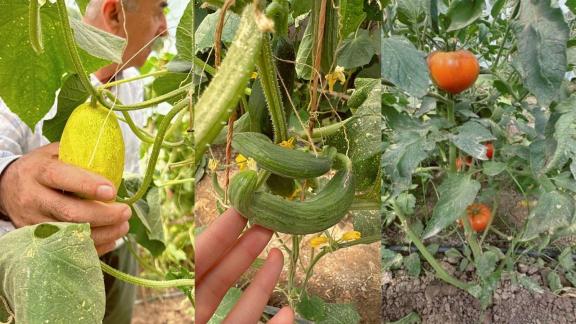
Towards the end of our visit, Zarina signaled to the guide and translator that she wanted to speak to me. I approached her, being curious as to what she wanted to tell me.
“We worked very successfully together and have seen good results from the adaptive farming practices,” she said. She added that everyone in the village is like family. They have worked very well together and fully participated in the project activities. She emphasized that the villagers take pride in growing everything on the farm ecologically clean - with no pesticide used.
Her words that followed surprised me. “For us, it would be very interesting to go see other villages and regions and see what works in their environment and learn from them, including the new technology and ways of doing things. Our daughters and daughters-in-law, and farmers also need to go, observe, and learn, not just the project managers (*like you).” Interestingly, all three of us evaluators on site were women. We three had traveled from South Korea, where the GCF is headquartered, and Canada respectively, to meet with the project stakeholders and beneficiaries.
Being able to go to places, observe and learn. Mobility is key to one’s growth and exposure to new and different things. For me personally, going to the USA alone as a Korean teenager to study there was the biggest life-changing experience. My life was never the same once I took that leap of faith and moved to the States. Zarina wants to go see how other farmers and villages are coping with the changing and changed climate and the current conditions for crop production. Yet in one of the conversations we had during the case study visit in the country, someone said that the water- and the pasture users’ unions do not include as many women as men in number, because women are not willing nor able to go around speaking and working with the people, as well as or as quickly as men.
This divergence in views put me in a reflective mode. In terms of this adaptation project meeting its indicators, including those for gender inclusion, the project had some signs of being a success. My question here is, is there anything else that can be done to build on this momentum and further reduce the gender knowledge and experience gap? Will there ever be a chance for women like Zarina to get closer to achieving a certain level of ‘mobility’, and go learn from and connect with others? Could the capacity building programmes of ours and other funding organizations be able to somehow reach these women with a strong desire to go see the other side, at the community and village level?
For this to happen, there are many prerequisites though. More women would need to have such a desire to go and learn on their own, and not in a forced or pressured manner. They would also need to have effective means of and access to transportation and the knowledge of how to utilize the means. Their tiny donkeys or cattle wouldn’t be fit for a long-distance journey, especially under the scorching heat in my opinion. I was told in another conversation that it is usually the job of women and children to go fetch water from afar, and women would sometimes set off on the journey with their donkeys. A World Bank blog also highlights that most women in the world find it harder to travel than men, which translates into having fewer opportunities.
When we visited the village, the temperature shot up to 39 degrees Celsius. While the people and their livestock have adapted to such hot and dry desert weather to an extent, the blazing heat that day was unbearable even for the locals. I was wearing long and wide pants for desert comfort and cultural sensitivity. Nevertheless, my airy pants attracted so much heat. I felt the sweat dripping on my back, and lightheaded for a few minutes.
The day’s sweltering heat was unbearable for us the visitors and the locals.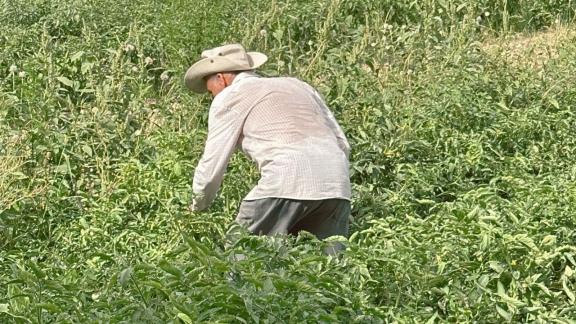
While I pondered on these matters and thought about what ‘empowerment’ could mean for the village women here, Zarina emphatically spoke. “Why will you go back to the city so soon? You should stay at my house tonight. *My husband isn’t there, and you are very welcome in my house.” I discovered that many households in these villages are female-led because most men are away for seasonal labor work in countries like Russia. According to statistics, remittances are one of the biggest sources of income for Tajikistan. After thanking Zarina and other villagers politely for their time and generosity and bidding farewell, we left the village to go see other sites.
I do not have immediate answers to these questions about truly empowering women, building their capacity, and giving them opportunities to see and learn new things. But I was happy to see that Zarina was not shy to speak her mind, although this happened after the male farmers had first spoken. Knowing what one wants and speaking their mind is the first step in the right direction. I invite the climate and international development community to join me in reflecting on how to truly empower women, strengthen their capacity and knowledge, and increase their mobility to access learning opportunities, especially for those living in highly vulnerable and remote environments.
Disclaimer: The names of people in the blog have been changed for privacy and to comply with international best practices. The views expressed in blogs are the author's own and do not necessarily reflect the views of the Independent Evaluation Unit of the Green Climate Fund.
